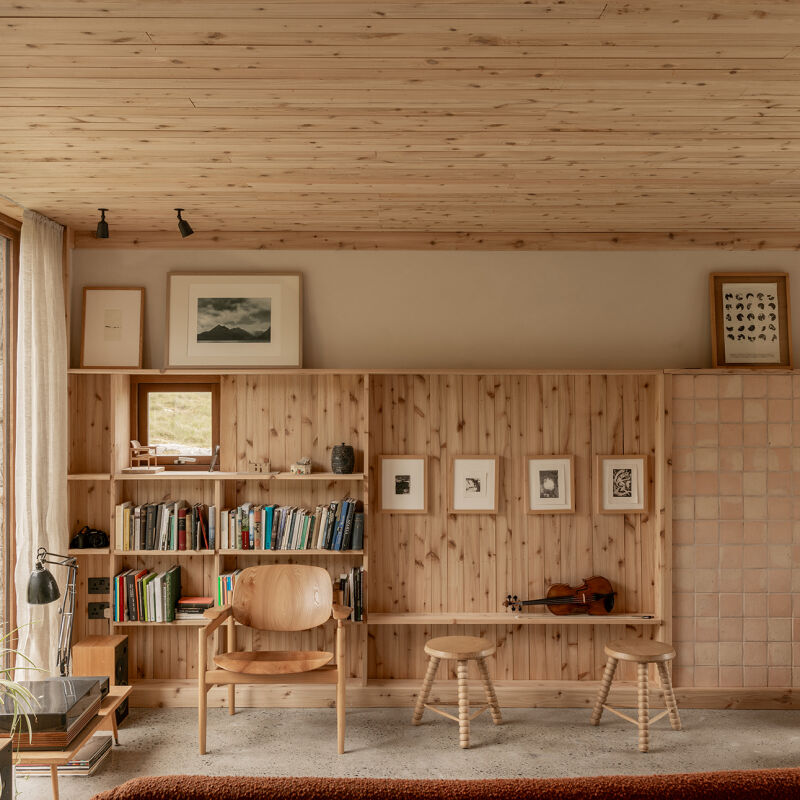There’s no denying that curves and blobs have been the dominant silhouettes of the design scene this decade, but lately we’ve seen the trend taken to the extreme—in the form of whole rooms and buildings rendered in undulations. Cases in point: the Gilder Center, the delightfully amorphous new addition to the Museum of Natural History in New York City (see image below); Robert Downey Jr.’s eco-conscious Binishell house in Malibu (go here for a peek); and the otherworldly Italian vacation home of Francesca Amfitheatrof, the artistic director of jewelery and watches at Louis Vuitton (you can see it here).
Besides bulbous contours and sinuous lines, what these projects have in common is their resemblance to cave dwellings. This type of architecture is most commonly found in the Mediterranean countries, but more and more the cave aesthetic—plastered or concrete walls, soft curves, built-in nooks and crannies—is being replicated in other parts of the world, even in cities.
Below, we’ve rounded up some standout examples, followed by practical iterations of the trend for the homeowner who wants to just dip a toe.
Big Curves





Small Curves





For other trends we’ve been noting, see:
- Trend Alert: Fluted Glass for Just-Enough Transparency
- Trend Alert: Tiled Kitchen Islands
- Trend Alert: Frilly Lights That Hang Like Flowers
Frequently asked questions
What is the trend of curve appeal cave houses?
The trend of curve appeal cave houses refers to the increasing popularity of homes and structures that are built or designed with curved or rounded elements, mimicking the natural shapes found in caves.
Why are curve appeal cave houses becoming popular?
Curve appeal cave houses are becoming popular for several reasons. Firstly, the organic and unique aesthetic they offer provides a refreshing departure from traditional angular architecture. Additionally, these structures often blend harmoniously with their natural surroundings, creating an immersive and serene living environment.
Are curve appeal cave houses only suitable for certain locations or climates?
While curve appeal cave houses are often associated with regions that have existing cave dwellings, they can be adapted to various locations and climates. With proper design and construction techniques, they can be made suitable for both warm and cold climates.
What are the advantages of living in a curve appeal cave house?
Living in a curve appeal cave house can provide numerous advantages. These structures have excellent thermal insulation properties, ensuring energy efficiency and reducing heating and cooling costs. Additionally, the curved shapes help create a natural flow of air and light, contributing to a comfortable and healthy living environment.
Can curve appeal cave houses be customized and personalized?
Absolutely! Curve appeal cave houses offer great flexibility for customization and personalization. From interior layouts and finishes to landscaping and exterior features, homeowners can tailor these spaces to suit their preferences and lifestyle.
Are curve appeal cave houses more expensive to build compared to traditional houses?
The cost of building a curve appeal cave house can vary depending on factors such as location, size, and desired materials and finishes. While some aspects, such as excavation costs, may be higher, curve appeal cave houses can also present opportunities for cost savings in energy efficiency and maintenance.
Can curve appeal cave houses be earthquake-resistant?
Yes, curve appeal cave houses can be designed and built to be earthquake-resistant. By utilizing appropriate structural engineering techniques and materials, these homes can withstand seismic activities and provide a safe living environment.
Are there any limitations or challenges associated with curve appeal cave houses?
Yes, there can be some limitations and challenges with curve appeal cave houses. Excavation and construction may require specialized expertise, especially in rocky or challenging terrains. Ventilation, moisture control, and natural light optimization are also crucial considerations to ensure a comfortable and healthy living space.
Where can I find examples and inspiration for curve appeal cave houses?
A great place to find examples and inspiration for curve appeal cave houses is the Remodelista website. They provide various articles and posts showcasing unique and stunning cave house designs and ideas.





Have a Question or Comment About This Post?
Join the conversation